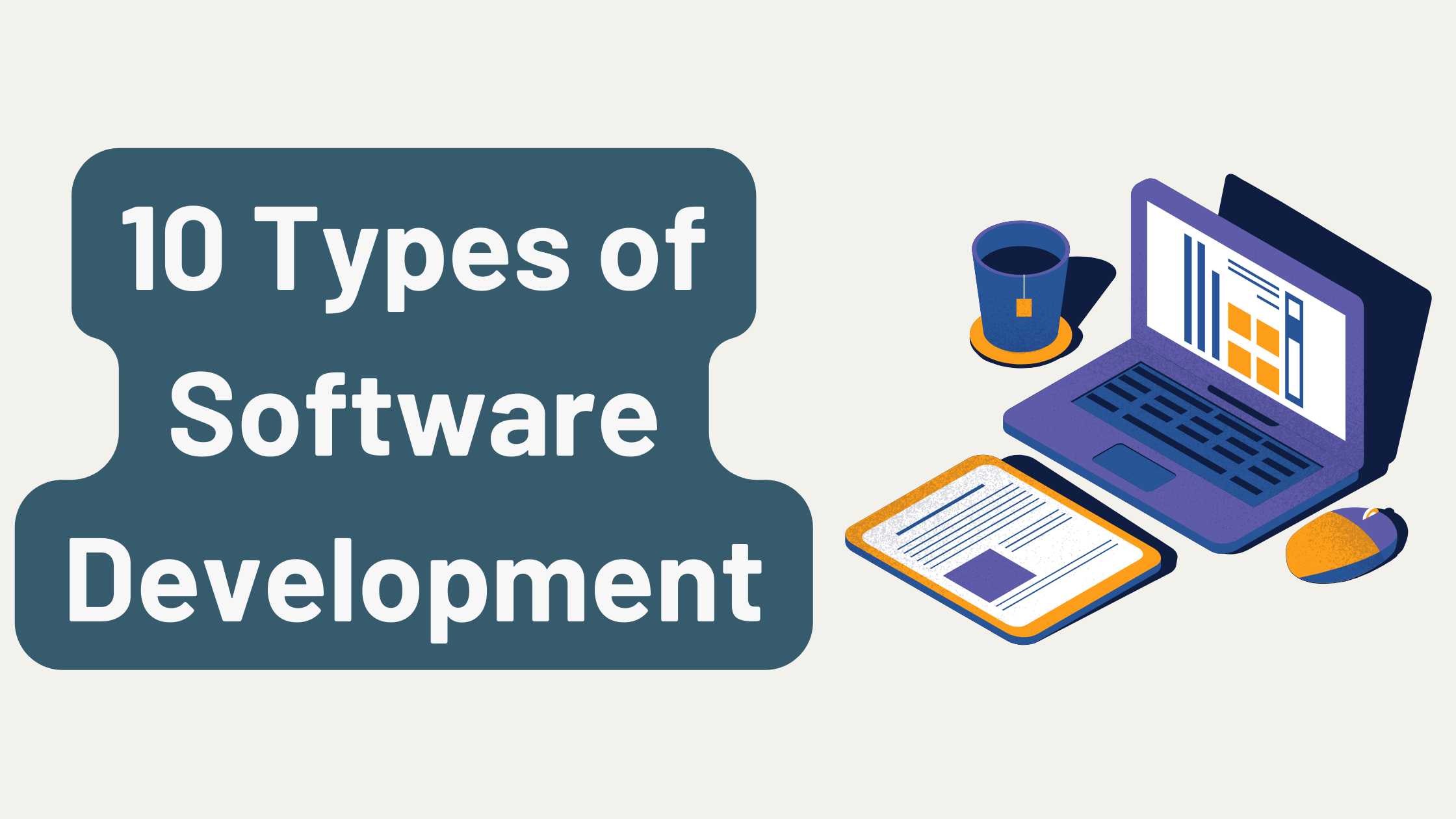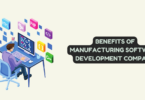
Types of Software Development
Software development encompasses diverse methodologies, each tailored to suit specific project needs and objectives. From traditional approaches to modern agile methodologies, the software development landscape offers a spectrum of methodologies to achieve efficient and effective software creation.
1. Waterfall Methodology
The Waterfall model follows a sequential, linear approach, where each phase must be completed before moving on to the next. It progresses through defined stages: requirements, design, implementation, testing, deployment, and maintenance.
2. Agile Methodology
Agile methodologies focus on flexibility, collaboration, and iterative development. It divides the project into smaller increments called sprints, fostering adaptability to changes, customer collaboration, and continuous improvement.
3. Scrum
Scrum is an Agile framework that emphasizes teamwork, accountability, and iterative progress. It operates through sprints, daily stand-up meetings, and sprint reviews, enabling rapid iterations and adaptation.
4. Kanban
Kanban, another Agile method, visualizes workflow on a board, allowing teams to manage tasks in a flexible, continuous manner. It promotes workflow transparency, efficient task management, and workload balancing.
5. Lean Software Development
Lean methodology aims to eliminate waste, optimize efficiency, and deliver value to customers rapidly. It focuses on continuous improvement, customer feedback, and minimizing unnecessary processes.
6. DevOps
DevOps combines software development (Dev) and IT operations (Ops), emphasizing collaboration and automation to improve the speed and quality of software delivery. It streamlines development, testing, deployment, and monitoring processes.
7. Rapid Application Development (RAD)
RAD accelerates software development by emphasizing rapid prototyping, iterative development, and minimal planning. It prioritizes user feedback and quick iterations over extensive planning.
8. Prototype Methodology
This methodology involves creating a prototype of the software to understand user requirements and functionality before full-scale development. It allows for early user feedback and requirement validation.
9. Spiral Model
The Spiral model integrates elements of both the Waterfall and prototype methodologies, allowing for iterative development and risk management. It involves repeated cycles of planning, risk analysis, engineering, and evaluation.
10. Extreme Programming (XP)
XP is an Agile approach focusing on improving software quality and responsiveness to changing requirements. It involves practices like pair programming, continuous integration, and test-driven development.
Different Type of Software Development Services
Mobile Development
Mobile development involves creating applications tailored for mobile devices such as smartphones and tablets. It encompasses both iOS and Android platforms and focuses on designing user-friendly, responsive, and feature-rich applications using programming languages like Swift, Objective-C (for iOS), Java, Kotlin (for Android), and cross-platform frameworks like React Native or Flutter.
Backend Development
Backend development refers to the server-side of an application that handles data processing, business logic, and interaction with databases. It involves designing and managing server infrastructure, APIs, and databases using programming languages like Python, Ruby, Java, Node.js, and frameworks like Django, Flask, Express, or Spring.
Frontend Development
Frontend development involves creating the visual and interactive part of an application that users interact with directly. It focuses on designing and building user interfaces using languages like HTML, CSS, and JavaScript, along with libraries/frameworks like React.js, Angular, or Vue.js to create responsive and engaging web interfaces.
Desktop Development
Desktop development is centered around building applications that run on desktop operating systems like Windows, macOS, or Linux. It involves creating software for various purposes, such as productivity tools, games, or multimedia applications, using languages like C++, Java, C#, or Electron framework to enable cross-platform development.
API Development
API (Application Programming Interface) development involves designing and building APIs that allow different software systems to communicate and interact with each other. It includes defining endpoints, handling data formats like JSON or XML, and ensuring security and scalability for smooth data exchange.
Full Stack Development
Full stack development involves expertise in both frontend and backend technologies, enabling developers to work on all aspects of an application. Full stack developers are proficient in languages, frameworks, and databases required for both client-side and server-side development, allowing them to handle end-to-end development tasks.
Web Development
Web development focuses on building applications or websites that operate on the internet or a local intranet. It encompasses both frontend and backend development and involves creating dynamic and interactive web pages using various technologies such as HTML, CSS, JavaScript, and backend frameworks or CMS (Content Management Systems) like WordPress or Drupal.
Database Development
Database development involves designing, implementing, and maintaining databases to store and manage data efficiently. It includes tasks such as database schema design, querying, optimization, and ensuring data security using technologies like SQL (Structured Query Language), NoSQL databases like MongoDB, or cloud-based database solutions.
Blockchain Software Development
Blockchain is a distributed ledger technology that securely records transactions across multiple computers in a tamper-resistant and transparent manner. It comprises blocks of data linked together through cryptographic hashes, creating a chain that ensures immutability and transparency.
Developers working in blockchain software development use specialized skills and tools to create distributed ledger systems that store transactional data across a network of computers. They employ programming languages like Solidity (for Ethereum-based projects), C++, Java, or JavaScript to write smart contracts, which are self-executing contracts stored on the blockchain. Key features include:
- Decentralization: Transactions are validated and recorded by a network of nodes rather than a central authority, enhancing security and reducing the risk of fraud.
- Transparency: The data recorded on a blockchain is visible to all participants in the network, ensuring transparency and trust.
- Immutability: Once data is recorded on the blockchain, it becomes nearly impossible to alter or delete, ensuring a reliable record of transactions.
- Smart Contracts: Self-executing contracts encoded on the blockchain that automatically execute and enforce agreed-upon terms when predefined conditions are met.
The Future Landscape of Blockchain in Business
The potential applications of blockchain in business are vast and evolving. From enhancing cybersecurity to streamlining operational processes and reducing costs, blockchain is poised to address numerous challenges faced by modern businesses. For those considering integrating blockchain into their business models, specialized services like https://www.ulam.io/software-services/blockchain-software-development provide expertise in developing customized blockchain solutions.
Tips for Effective Software Development:
- Define Clear Objectives: Establish clear project goals and objectives before commencing development.
- Choose the Right Methodology: Select a development methodology aligned with the project’s nature, size, and requirements.
- Communication and Collaboration: Foster open communication and collaboration among team members for better efficiency.
- User Involvement: Involve end-users in the development process for feedback and validation.
- Continuous Testing: Implement continuous testing to identify issues early in the development cycle.
- Regular Reviews and Adaptation: Conduct regular reviews and adapt methodologies as needed for better outcomes.
- Documentation: Maintain comprehensive documentation throughout the development process for future reference.
- Prioritize Security: Integrate robust security measures to protect software from potential threats.
- Scalability and Flexibility: Design software with scalability and flexibility to accommodate future changes and growth.
- Feedback and Iteration: Encourage continuous feedback and iteration cycles to refine the software continuously.
Why Use Different Software Development Types?
- Adaptability: Different methodologies cater to varying project needs and adapt to changing requirements.
- Efficiency: Each approach offers specific advantages in terms of efficiency, speed, and quality of deliverables.
- Customer-Centricity: Agile methodologies focus on customer feedback, ensuring the end product meets user expectations.
15 FAQs About Software Development Types:
- Which methodology is best for small projects?
- Agile methodologies like Scrum or Kanban are often preferred for small projects due to their flexibility and adaptability.
- Is Waterfall methodology outdated?
- While newer Agile methodologies are popular, Waterfall remains relevant for certain projects with well-defined requirements.
- How do I choose the right methodology for my project?
- Consider factors like project size, complexity, team expertise, and customer involvement when selecting a methodology.
- Can methodologies be combined?
- Yes, hybrid approaches combining elements of different methodologies are common based on project requirements.
- Is Agile suitable for large-scale projects?
- Yes, Agile methodologies can be scaled up using frameworks like SAFe or LeSS for large-scale projects.
- Are Agile methodologies suitable for fixed-budget projects?
- Agile methodologies allow flexibility but can still work within a fixed budget by prioritizing features and delivering value incrementally.
- What role does customer feedback play in software development?
- Customer feedback is crucial in Agile methodologies to ensure the final product aligns with user needs.
- Is DevOps only for cloud-based projects?
- No, DevOps practices can be implemented in various software projects irrespective of their deployment environment.
- Do all methodologies require extensive planning?
- No, while methodologies like Waterfall emphasize extensive planning, Agile approaches prioritize adaptability and iterative planning.
- How does Lean methodology contribute to software development?
- Lean methodology focuses on eliminating waste and optimizing processes, enhancing overall efficiency and value delivery.
- Is RAD suitable for projects with evolving requirements?
- Yes, RAD’s iterative nature makes it well-suited for projects where requirements evolve.
- Can traditional methodologies like Waterfall be used in modern software development?
- Yes, Waterfall can still be effective for projects with well-defined requirements and minimal changes expected.
- Do all methodologies prioritize speed of development?
- No, while some methodologies like RAD emphasize rapid development, others prioritize quality or customer satisfaction.
- What are the key challenges in adopting Agile methodologies?
- Challenges may include resistance to change, lack of understanding, and difficulties in estimating timelines.
- Is it possible to switch methodologies mid-project?
- Yes, although challenging, it’s possible to switch methodologies if deemed necessary for project success.
Conclusion
Software development offers a diverse range of methodologies, each catering to different project needs and objectives. Understanding these methodologies, their applications, and choosing the right approach based on project requirements can significantly impact the success of software development endeavors.






